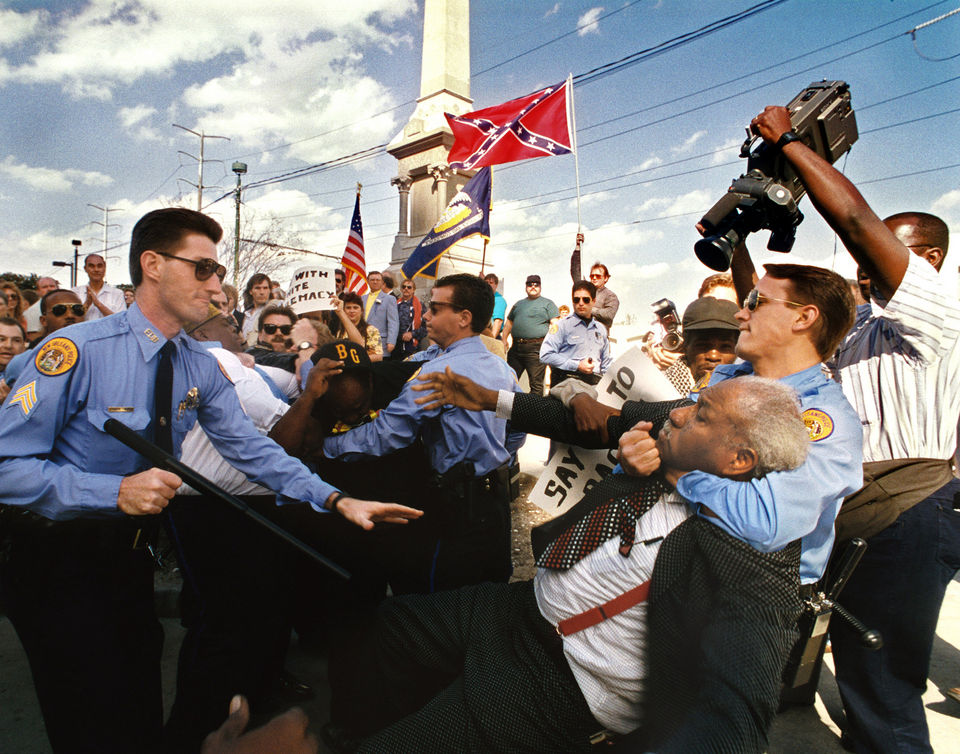The debate surrounding Confederate monuments revolves largely around the question of why they were erected and dedicated in the first place. With the publication of New Orleans Mayor Mitch Landrieu’s new book, In the Shadow of Statues: A White Southerner Confronts History that question has shifted to why four monuments in the Crescent City were removed this past spring.
Landrieu’s book is a quick and worthwhile read. Apart from the final chapter, which focuses on the monuments specifically, the book is largely autobiographical with a focus on the author’s coming of age in New Orleans and career as a public servant at the state and local levels. Landrieu emphasizes the influence his parents and religious leaders had on his racial outlook. He explores the challenges of having to work with David Duke in the state legislature and, of course, Landrieu spends a good deal of time reflecting on the city’s response to and impact of Hurricane Katrina in 2005.
As for the monuments, Landrieu is up front in noting that he never really acknowledged their presence before becoming mayor of New Orleans. They were merely landmarks:
The statues seemed like a fringe issue, brought up by a small group of activists from time to time, though they didn’t call them symbols of oppression or monuments to white supremacy. To be honest, I didn’t fully understand their connection to today’s protests. I didn’t know my own history. (p. 37)
According to Landrieu, it was during a conversation with Wynton Marsalis about the city’s plans for its Tricentennial celebrations in 2018 that he was first made aware of the problem that these monuments represented to much of the local black population.
Landrieu’s willingness to face this history and take steps to publicly address it by calling for the removal of the city’s Confederate monuments should be applauded. The speech that the mayor gave on May 19, 2017, while the Robert E. Lee statue was being removed from its pedestal, was powerful and laid bare the racist roots of these monuments. That speech catapulted the mayor into the spotlight and sparked discussions in other communities across the county. It also placed the mayor in a position where he alone could tell the story of why and how these monuments were removed.
I applaud the mayor for his commitment to addressing this difficult issue, but I also believe that Landrieu could have done more in the book to place his achievement alongside the tireless efforts of others within the black community who came before him.
There is no mention of Rev. Avery Alexander, a civil rights leader and state legislature, who in 1993 led a rally calling for the removal of the Liberty Place Monument. During the rally he was dragged away in a choke hold by local police.

Source: The Times-Picayune
That same year City Council President Dorothy Mae Taylor introduced an ordinance that would remove any monuments or works of art “that honor violence or ethnic prejudice.”
In 1998, The Times-Picayune reported on a protest at Lee Circle:
Four political activists gathered Wednesday at Lee Circle to denounce the ongoing restoration of the monument to Confederate Gen. Robert E. Lee. They said the statue glorifies a pro-slavery icon in a city mostly populated by the descendants of African slaves and led by a black mayor.
The Rev. Marie Galatas extends this history of protest against the monuments back to the early 1970s.
Local activists such as Malcolm Suber, who continues to lead the grassroots group Take Em Down NOLA, traces their protests against the monuments back even further to the 1960s and the civil rights era.
Again, I don’t in any way want to diminish Landrieu’s accomplishments or dismiss his story as mere political opportunism, but this “small group of activists” deserved to be acknowledged more directly in this book. Landrieu’s courage and commitment to creating an environment where all of the city’s residents feel equally represented only makes sense within this broader historical context.
These monuments were made possible by an embrace of a mythical understanding of the Civil War and Reconstruction. Let’s not embrace new ones in our understanding of why and how they were finally removed.
Very informative post, Kevin. Many thanks.
P.S. is the word in the title “Southern” or “Southerner”?
Thanks.
Hi Kevin,
I just wanted to drop a line to say I have learned about the monuments by following your blog. Thank you for so diligently covering the subject. In an age of “meme warfare,” it is nice to turn to reliable places, like your blog, on social media. Its particularly relevant for my field, working in a museum that deals in part with Civil War history and contains some traces of the lost cause narrative.
Ryan in Maryland
Thanks, Ryan. I appreciate the kind words.
Thank you, Kevin. The contributions of the “small group” do put the monument protests into a larger context. I wonder if you’ve shared these thought with Mayor Landrieu. I’d like to think he’d appreciate them. All good wishes.
Thanks so much for the positive feedback.